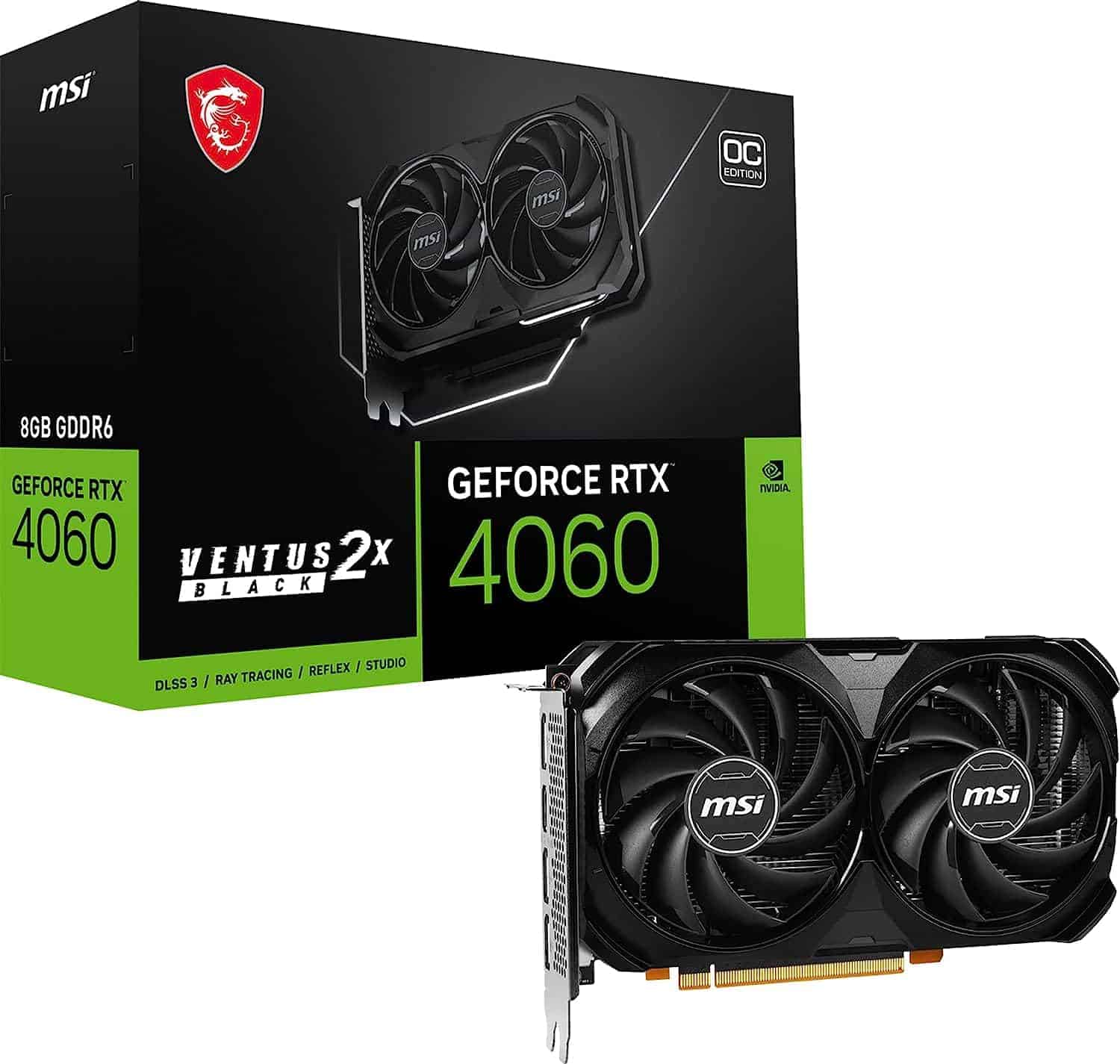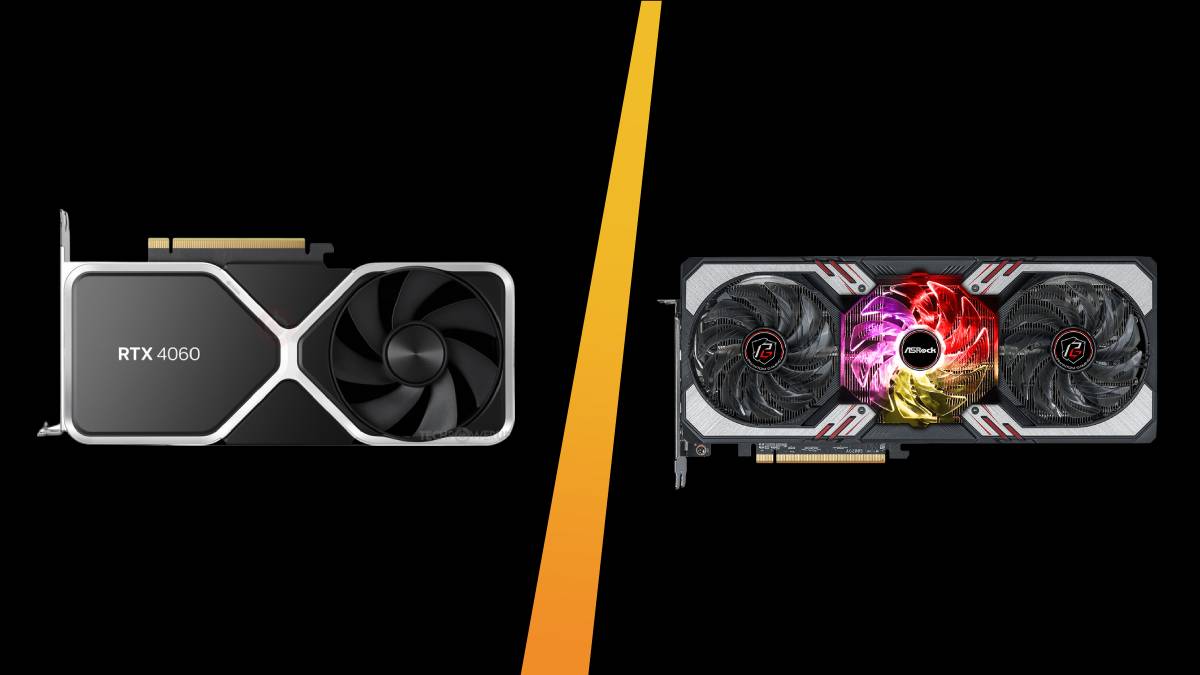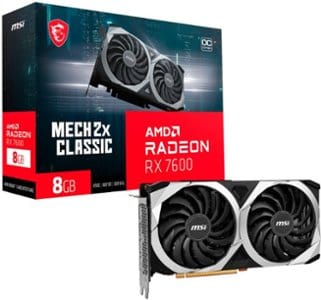You can trust VideoGamer. Our team of gaming experts spend hours testing and reviewing the latest games, to ensure you're reading the most comprehensive guide possible. Rest assured, all imagery and advice is unique and original. Check out how we test and review games here
We’re bringing you our RTX 4060 vs RX 6700 XT comparison so you can get to the bottom of this debate.
The launch of the RTX 4060 brings a seriously premium price to the 1080p GPU gaming market. At the same time, it’s going to be the most affordable way to get access to the RX 40-series’ Lovelace architecture and the impressive gaming features that brings.
The RX 6700 XT meanwhile, has been out for longer and has used this time to establish itself as one of the best GPUs available right now. It offers impressive power giving high frame rates across the board and even at some of the higher resolutions, all while remaining impressively affordable.
To make our comparison as simple as possible we’ve broken it down into distinct sections and discussed both GPUs in each one. Let’s get into it.
RTX 4060 vs RX 6700 XT – specs
| RTX 4060 | RX 6700 XT | |
| GPU | AD107 | Navi 22 XT |
| Architecture | Ada Lovelace | RDNA 2 |
| CUDA Cores | 3,072 | 3,584 |
| Base Clock (MHz) | 1,830 | 2,424 |
| Boost Clock (MHz) | 2,460 | 2,581 |
| Memory | 8GB GDDR6 | 12GB GDDR6 |
| Memory Bus | 128-bit | 192-bit |
| Memory Bandwidth | 272 GB/s | 384.0 GB/s |
| Cache memory | 24MB | 96 MB |
| Bus interface | PCIe 4.0 x8 | PCIe 4.0 x16 |
| Tensor cores | 96 | N/A |
| Total Graphics Power | 110W | 230W |
| Maximum display resolution | 4K at 240Hz/ 8K at 60Hz with DSC | 4K at 140Hz/ 8K at 60Hz |
The specs in the table above are pretty lopsided with the RX 6700 XT tending to boast the more powerful ones. The difference in VRAM especially jumps out. The RTX 4060 has drawn a fair bit of stick for its 8GB memory count, which is seen as a bit outdated for new cards, even budget-friendly ones. The RX 6700 XT does not fall into this trap offering 12GB.
It then puts this memory to good use with a larger bus width, 192-bit vs 128-bit, and double the PCIe lanes. This allows information to flow around the card faster, meaning the cores can communicate with the memory more efficiently.
Speaking of cores the RX 6700 XT is ahead here too, having just under 500 more. It’s these cores that function as the engine room for GPU, crunching much of the complicated calculations needed to track and render graphics.
The RTX 4060 is far more energy efficient meaning that it will cost less to run over time. It’s also got another ace up its sleeve, architecture.
RTX 4060 vs RX 6700 XT – architecture
Architecture has a huge impact on the performance of a GPU and dictates many fundamental operations. In this area the RTX 4060 is more advanced, boasting Nvidia’s latest architecture, Ada Lovelace. This is brimming with powerful gaming features and abilities. These include 3rd generation ray tracing cores which ensure the light tracking technology is executed more efficiently than ever before.
There are also 4th generation Tensor cores. These power AI operations within the card, such as DLSS 3. Compatible games use DLSS 3 to generate frames and even upscale resolutions, giving a significant performance boost without requiring more computing power.
The RX 6700 XT meanwhile, features AMD’s RDNA 2 architecture. This is a generation behind Lovelace but still performs well. It’s got ray tracing accelerators and AMD’s Infinity Cache technology which offers a bandwidth boost. Despite this, Lovelace does perform better overall, especially with raytracing enabled.
RTX 4060 vs RX 6700 XT – performance
Now that we’ve crunched the numbers and measured up the architecture, let’s see how these cards actually perform. Both of these cards are among the best GPUs for 1080p, capable of generating the super-fast frame rates online gaming can require. The RX 6700 XT continues this to higher resolutions, continually getting well in excess of 60FPS at 1440p. While the RTX 4060 may struggle more above 1080p thanks to its smaller bus width and other lacking specs.
In a nutshell, the RX 6700 XT has the advantage of a higher VRAM and memory bus, while the 4060 has the advantage of advanced ray tracing and DLSS 3.
RTX 4060 vs RX 6700 XT – price
A significant difference in price between two cards can often make the choice between the two much simpler. Fortunately, neither of these cards goes for an exorbitant cost. The RTX 4060’s MSRP is just $299, making it by some distance the cheapest Lovelace GPU currently available, being a full $100 less than the RTX 4060 Ti. You can find out where to buy the RTX 4060 here.
MSI Gaming GeForce RTX 4060

Base Clock
1830MHz
Boost Clock
2460MHz
VRAM
8GB
Recommended PSU
300W
The RX 6700 XT is also one of the best GPUs under $500 with an MSRP of $479 which has stayed pretty consistent since it was released. This does make the RTX 4060 a fair bit cheaper, however, but remember for that lower price you are getting significantly lower VRAM and CUDA core count.
MSI Radeon RX 6700 XT

Base Clock
2321 MHz
Boost Clock
2581 MHz
VRAM
12GB
Dimensions
267 x 110 x 40mm
Recommended PSU
550W
Final word
If you are looking to pick between them, it ultimately comes down to a question of personal preference and what kind of gaming rig you are looking to build.
If budget is of primary concern and you are also focussing on 1080p gaming, the RTX 4060 will likely be the better option for you. It will have a good ray tracing performance considering its price and the RTX 4060 specs offer great performance at 1080p overall, but especially in DLSS 3 compatible games.
Meanwhile, the RX 6700 XT offers a brilliant amount of price for performance and is one of the best GPUs for 1440p, as well as 1080p. It is in a higher price range but you are rewarded for that with powerful specs and good performance. That said if you are very concerned with ray tracing you might want to look elsewhere.










